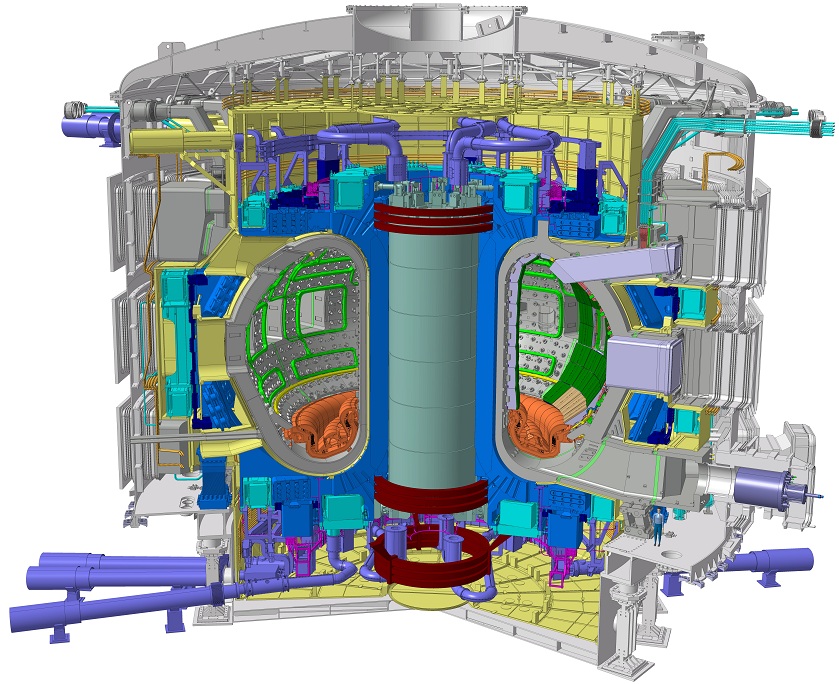In nuclear fission, current nuclear energy, the nucleus of an atom is split, but in fusion two lightweight atoms join together. The biggest benefit is no explosion.
The ITER project is seeking to turn nuclear fusion into reality and is making use of the Tokamak reactor for this purpose. Reactors of this type and the plasma used in them to carry out fusion have a number of control problems, and to solve them, electronics engineer Goretti Sevillano has come up with some tools in her thesis defended at the University of the Basque Country.
Tokamak is in the pole position to obtain efficient energy from nuclear fusion, says Sevillano. “The materials used in fusion must have certain specific features, and these materials have to be turned into plasma. At the same time, the plasma has to be restricted to a limited space to enable the reaction to be generated and the energy to be used. To achieve this, magnetic confinement is applied in the case of the Tokamaks.”

ITER Tokamak. credit: ITER.org
The magnetic field creates lines that act as a wall to keep the plasma in place, but the plasma and the device itself have several problems that have yet to be solved.
“To develop Tokamaks, many of the plasma’s parameters must be controlled, as well as the whole device itself; the currents that are going to be used, the voltage, the intensity, etc. Until all these things are controlled, it will not be possible to use these machines to produce marketable energy,” the researcher points out.
Toward this end, Sevillano has embedded the code named ASTRA, frequently used to simulate the behavior of Tokamak reactors, into Matlab software. Using the code in Matlab will facilitate the development of controllers suited to these devices.

“Control of the parameters is necessary to obtain the maximum energy possible from the plasma, and the amount of this energy that can be extracted is calculated on the basis of the current: the greatest amount of current possible has to be maintained during the longest time possible. That is why these parameters have to be controlled by means of the control, in turn, of the numerous coils and voltages within the structure,” she adds.

Goretti Sevillano, author of the thesis. Credit: Monika del Valle / Argazki Press
This PhD thesis work is only a single branch of what needs to be a complete tree. “The aim of all these tasks is to design a machine capable of generating marketable energy within the ITER project,” she explains.
No rush. Nuclear fusion has been in the works for 50 years and it is always 40 years away.
Sevillano's thesis is entitled Herramientas para el control del plasma en reactores Tokamak de fusión nuclear: integración Astra-Matlab y control en tiempo real (Tools for plasma control in Tokamak nuclear fusion reactors: Astra-Matlab integration and control in real time). She has also had two papers published on this, in the journals Informatica and Energy.





Comments